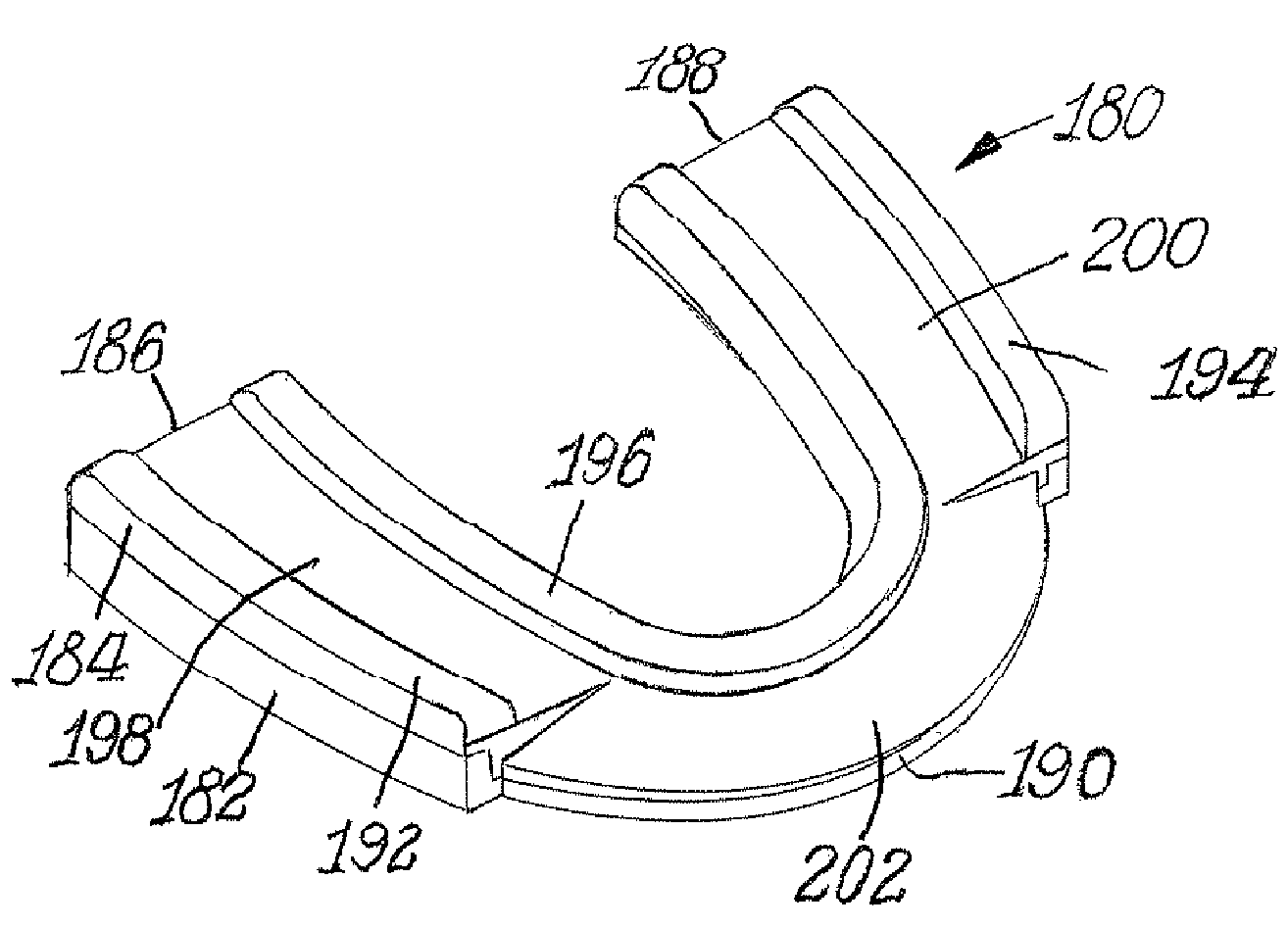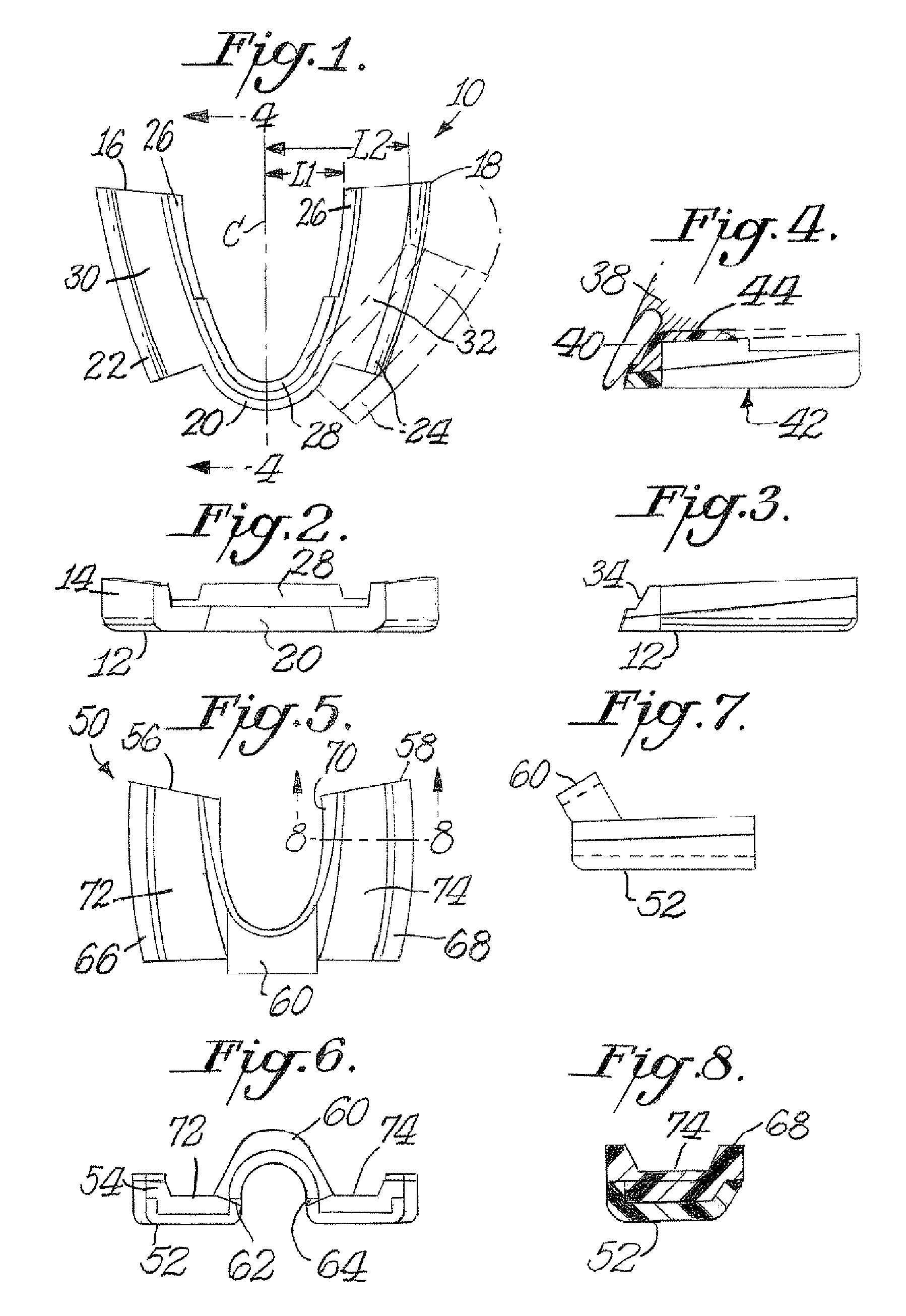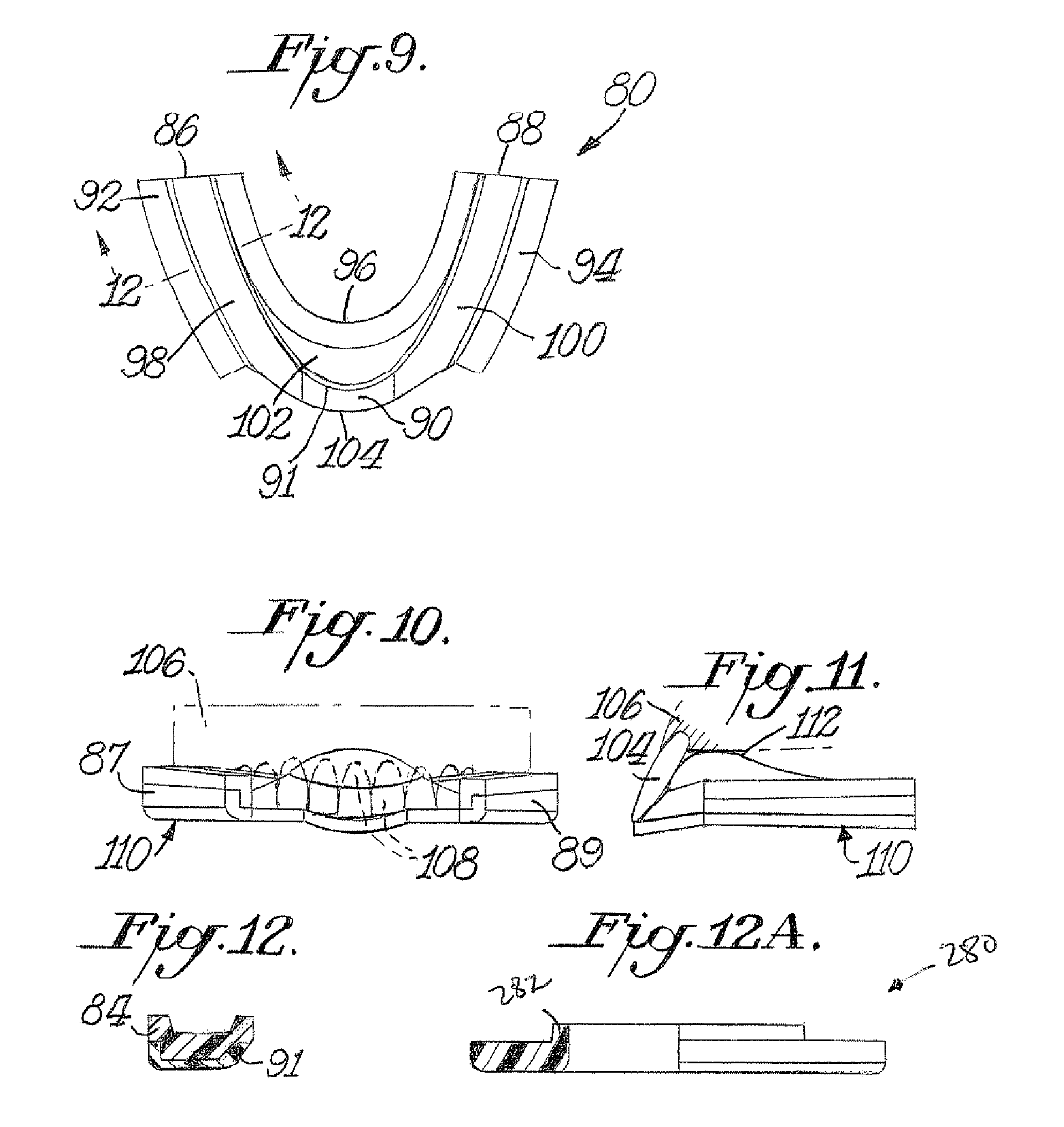Interocclusal appliance and method
a technology of interocclusal appliance and inner occlusal cavity, which is applied in the direction of impression cap, teeth capping, snoring prevention, etc., can solve the problems of time-consuming and expensive, significant potential risk factor for dental implant failure, and problems encountered with prior self-fitting nightguards
- Summary
- Abstract
- Description
- Claims
- Application Information
AI Technical Summary
Benefits of technology
Problems solved by technology
Method used
Image
Examples
first embodiment
[0068]Referring first to FIGS. 1-3, a preform 10 for an interocclusal appliance 42 is shown. The preform 10 has a base 12 or bite plate with a top surface and a bottom surface. An impression material 14 is bonded or adhered onto the top surface of the base 12. One preferred bonding is by molding the impression material over the base. The base 12 may be formed by injection molding a thermoplastic resin into a base mold cavity, and this base 12 is then placed into an occlusal appliance mold cavity. The impression material 14 may be injected into the occlusal appliance mold cavity over the base 12. The mold bond between the base 12 and the impression material 14 (which later is transformed into the maxillary encasement) is required to withstand the lateral and compressive stresses encountered during bruxing or clenching at oral cavity temperatures.
[0069]The base 12 is in the form of a maxillary dental arch, having an end portion 16 at one terminus of said arch and another end portion 1...
second embodiment
[0085]Referring next to FIGS. 5 to 8, the invention comprises a preform 50 having a base 52 or bite plate with a top surface and a bottom surface. An impression material 54 is adhered or bonded onto the top surface of the base 52, such as by co-molding. The base 52 has two end portions 56, 58 that are joined by an arch 60 formed between the two end portions 56, 58. Arch 60 curves concavely such that each bottom tip of said arch meets an end portion the bottom surfaces (or occlusal faces) of the end portions 56, 58 of the base are generally planar. The buccal sidewalls of the end portions of the base 12 may slope downwardly slightly from the rear of the preform 50 toward the front of the preform as shown in FIG. 7.
[0086]By virtue of flexibility of the arch 60 material, the preform 50 may be flexed from a first position where end portions 56, 58 are spaced apart a first distance to a second position where end portions 56, 58 are spaced apart a second distance, where the second distanc...
third embodiment
[0089]FIGS. 9 to 12 show a preform 80 and an interocclusal appliance 110 for the invention (appliance 110 shown in FIG. 11). The preform 80 has a base 82 and impression material 84 molded to a top surface of such base 82. The base 82 is in the shape of a maxillary dental arch, having end portions 86, 88 and a central portion 90 between such end portions 86, 88. The end portions 86, 88 have upstanding side walls 87, 89 and an upstanding lingual wail 91 that extends along the dental arch along the end portions 86, 88 and the central portion 90. The central portion 90 of the base 82 has only the upstanding lingual wall 91, and does not have an upstanding labial or front wall.
[0090]The impression material 84 generally covers the top surface of the base 82. The impression material 84 is formed to have a first outer upstanding ridge 92 and a second outer upstanding ridge 94, and an inner upstanding ridge 96. Optionally, a step (not shown) may be formed in the inner upstanding ridge 96 suc...
PUM
| Property | Measurement | Unit |
|---|---|---|
| distance | aaaaa | aaaaa |
| thickness | aaaaa | aaaaa |
| temperature | aaaaa | aaaaa |
Abstract
Description
Claims
Application Information
 Login to View More
Login to View More - R&D
- Intellectual Property
- Life Sciences
- Materials
- Tech Scout
- Unparalleled Data Quality
- Higher Quality Content
- 60% Fewer Hallucinations
Browse by: Latest US Patents, China's latest patents, Technical Efficacy Thesaurus, Application Domain, Technology Topic, Popular Technical Reports.
© 2025 PatSnap. All rights reserved.Legal|Privacy policy|Modern Slavery Act Transparency Statement|Sitemap|About US| Contact US: help@patsnap.com



